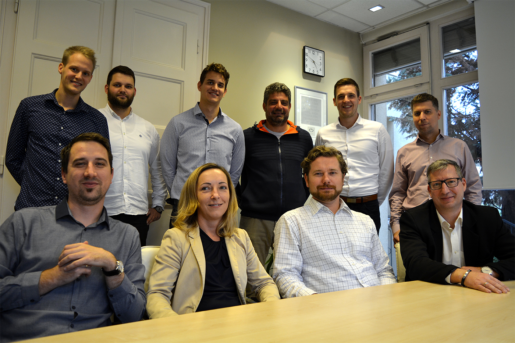News
ASP coffee break interview

Clarity – What is ASP and what was the ASP 2.0 project about?
ASP team – The local government ASP (Application Service Provider) is a set of integrated IT services for the local governments which is based on Service Oriented Architecture (SOA) using a common run-time environment and database, and modular in its design. More simply: the local government ASP system is an IT infrastructure and IT service system which provides centralized IT support for the fulfilment of local governments’ duties. By now, all the local governments of Hungary accessed the ASP system.
Clarity participated in the ASP 1.0 pilot project aiming the implementation of ASP (between 2012 and 2015) and in the follow-up ASP 2.0 project aiming the ASP system’s national roll-out (between 2017 and 2019) as well.
Clarity – What sort of benefits does the ASP provide for local governments and users?
ASP team – For the local governments, the ASP system makes applications available that are necessary for the fulfilment of their duties with standardized user interfaces and as a cloud-based service, ensuring the efficient service of their clients. Moreover, the creation of a data warehouse supports the collection and analysis of the relevant data from the applications.
Through the ASP, a wide selection of IT services is put at the local government users’ disposal which ranges from the IT framework through the document handling system, resource planning system, tax system, real estate registry system, industry and commercial system and inheritance registry system and to the ASP Data Warehouse. The correspondence between the local governments and their clients (residents and businesses) is supported by the local government’s website and the e-government portal for cases under local government jurisdiction.
By using ASP, the local governments comply with legal requirements for e-government services. The clients of local governments (excluding those local governments which are not connected to ASP through system connection) may deal with the local government online through the e-government services when filling in and submitting online forms, viewing tax balance and tax declaration information and checking the status of their cases. Clients may do these on their own or through an appointee.
The portal is equipped for receiving online payments for fees, fines and bills issued by the local government but this service did not go live yet.
Clarity – How did ASP affect the operation of local governments?
ASP team – The ASP infrastructure and service system makes the operation of local governments more controllable and transparent. The operative efficiency increases, the processes are less error sensitive and the burdens of local governments decrease.
The central ASP services relieves the local governments from the task of developing their own IT systems. With the applications, which are integrated with internal and external IT services, and with the widening possibilities of e-government services for local government’s clients the local government processes run more smoothly and the customer experience improves.
Clarity – What kind of support did Clarity provide in the ASP 2.0 project? What were out main tasks?
ASP team – Under the label of public administration management we provided various services such as test management tasks, data quality enhancement, supporting the local governments to access the system, standardization of ASP applications and user interfaces with our own ErgonomX solution, further development of the ASP service management system, contributing expertise for the creation of ASP data warehouse and BI competence centre, and a detailed analysis for the further development of ASP.
We would emphasise the design of ASP e-government service upgrade, which was realized through efficient cooperation with our clients and the developers.
Clarity – What was the biggest challenge of the ASP 2.0 project?
ASP team – Our participation in the ASP 2.0 project lasted more than 2 years, therefore it is difficult to point out a single most significant challenge. Probably our most complex task was the specification and monitoring of the development tasks for the applications.
We would illustrate this with the following numbers: our client was responsible for the development as a member of a 6 members consortium. Within this task we managed 368 development requirements which were distributed among 6 systems developed internally by the consortium members and 7 systems developed by contractors.

Clarity – What did we learn in this project and what kind of competences can we utilize in future projects?
ASP team – Colleagues participating in the project learned a lot about project management in this environment with multiple clients and contractors, about its operation, the stakeholder system and the associated challenges of a consultant’s work. Professional development meant the familiarization with the operation of the state sector and local governments and the development of e-government. Even though the e-government services did well, there is still plenty of room for improvement regarding user experience and service quality.
Clarity – What was our greatest success in the ASP 2.0 project?
ASP team – Instead of directly answering the question, let us quote the representative of our client, the Hungarian State Treasury: “without Clarity, the ASP 2.0 would have not been possible”.
Clarity – Our contract ran out on the 31st of May 2019, but our colleagues – within a new contract – still work on the ASP. What are their tasks?
ASP team – Our expert colleagues are supporting the development of the ASP data warehouse – especially the expert tasks regarding the data mart of the resource planning system, testing, report design and development, and the utilization of the Microsoft Power BI business intelligence tool selected for the project.
Clarity – Thank you for the interview and we wish similar successes in the future!

